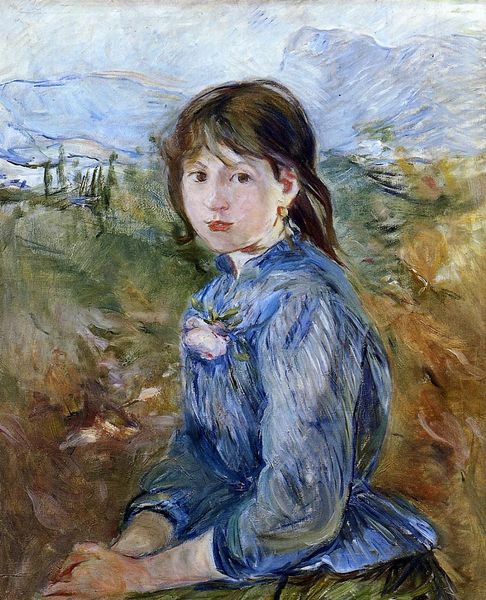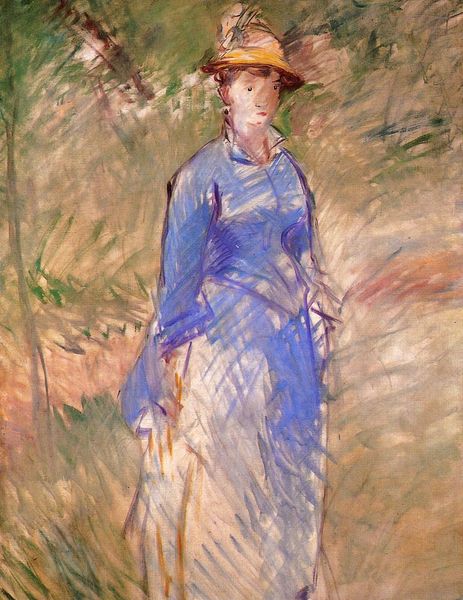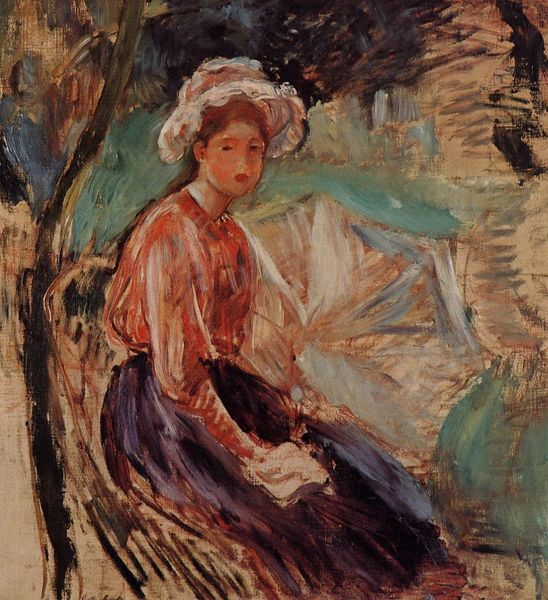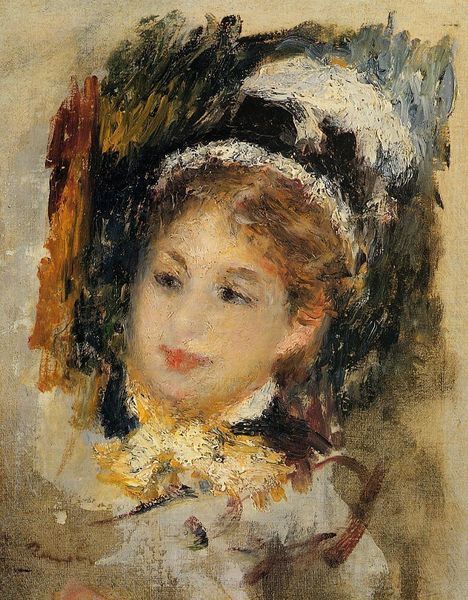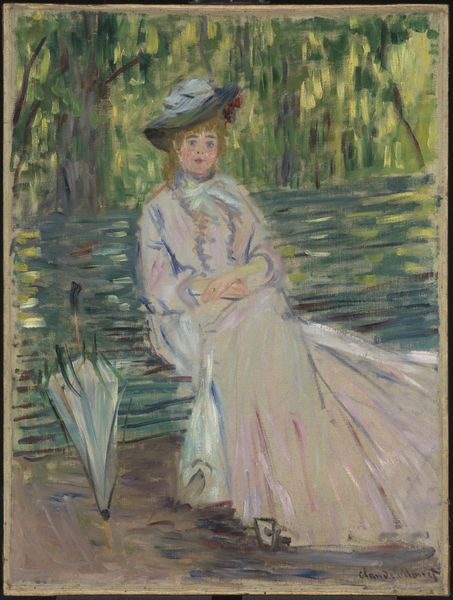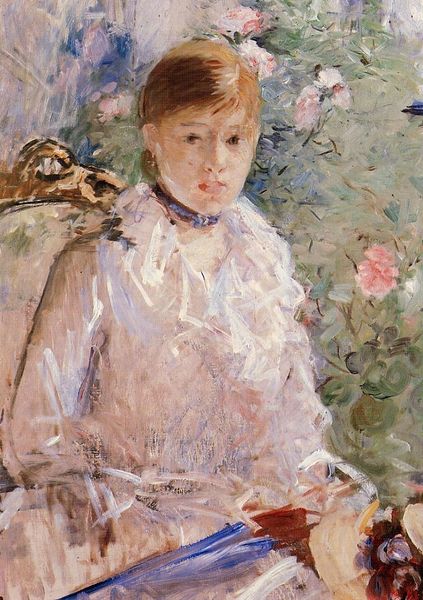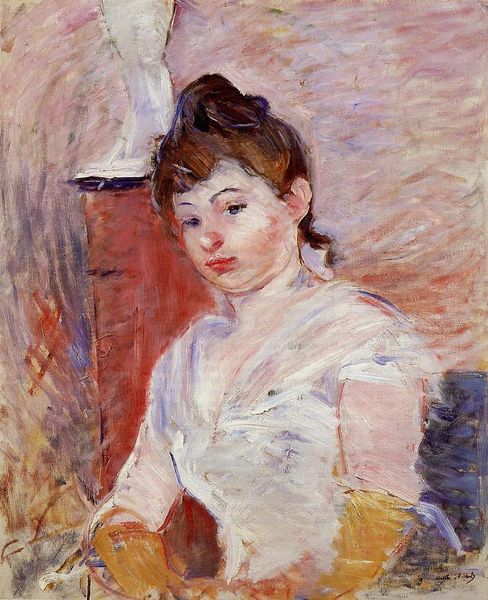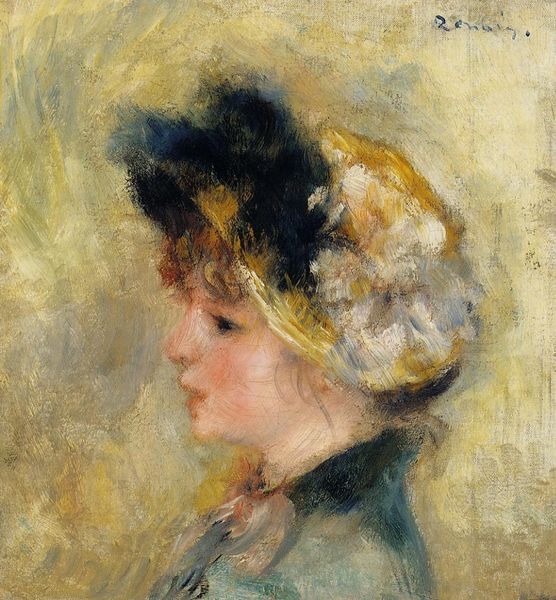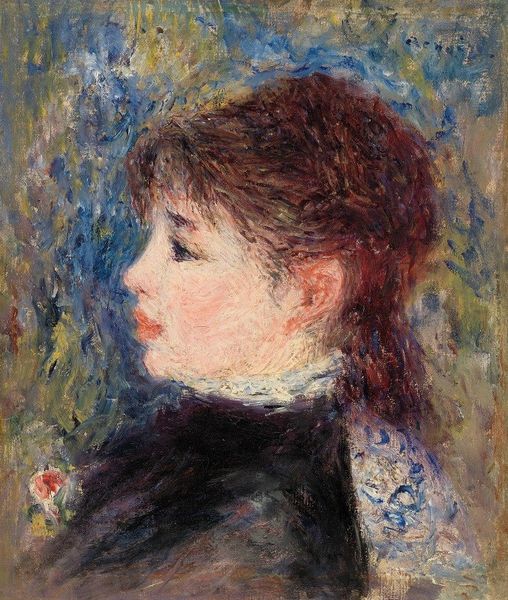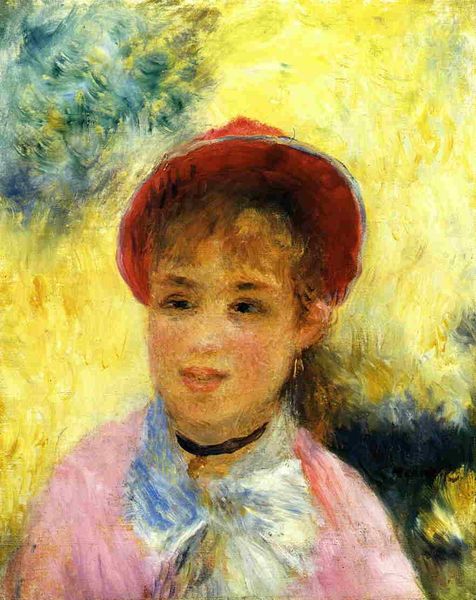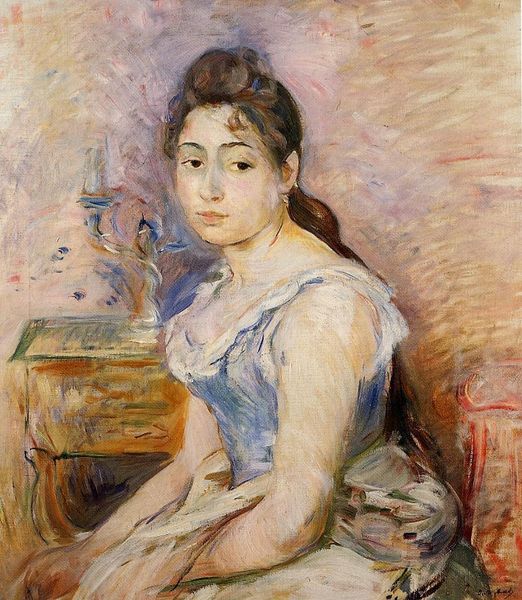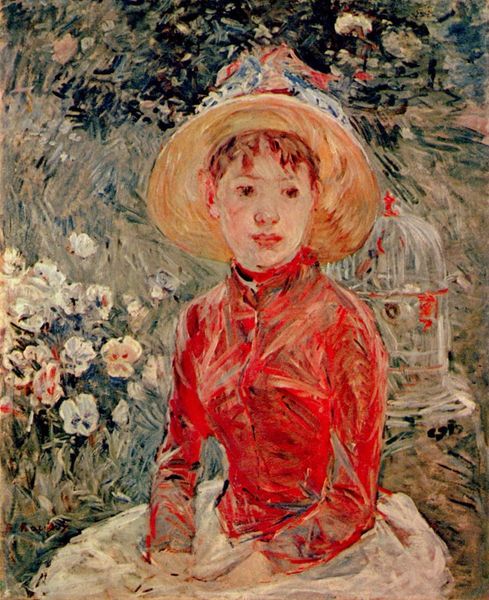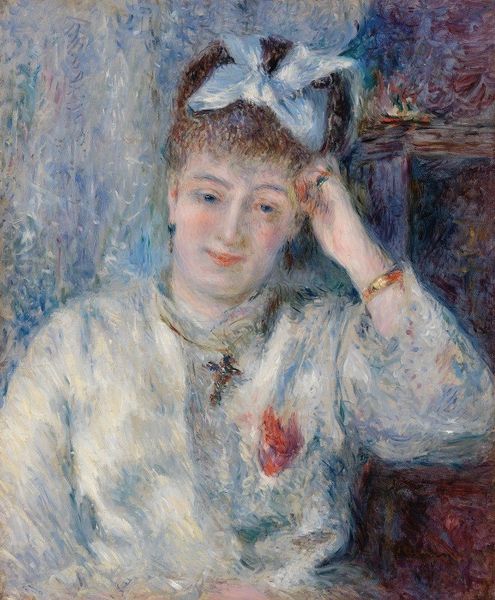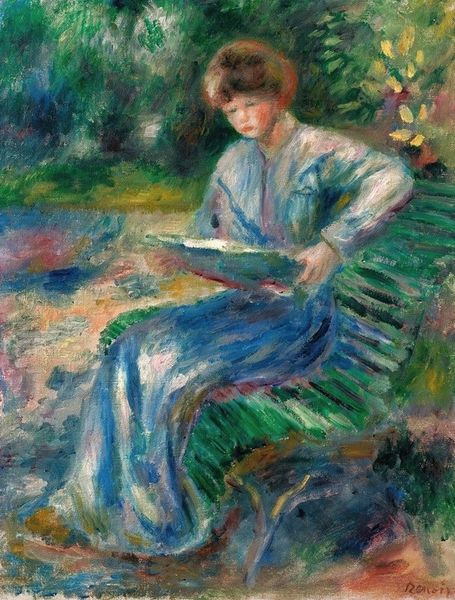
painting, plein-air, oil-paint
#
portrait
#
figurative
#
painting
#
impressionism
#
plein-air
#
oil-paint
#
landscape
#
figuration
#
oil painting
#
post-impressionism
Copyright: Public Domain: Artvee
Editor: Berthe Morisot's "Young Woman with a Straw Hat," created in 1884 using oil paints, is so light and airy. I am drawn to the delicate brushstrokes. How do you see this artwork, from your perspective? Curator: Notice the texture created by the visible brushstrokes, how Morisot hasn't blended everything perfectly smooth. It highlights the physical act of painting. This ties into the social context too. Consider where the materials came from, who produced the pigments and canvases, and Morisot’s place as a woman navigating the male-dominated art world of her time. Editor: So, it's not just *what* she painted, but also *how* she painted it, revealing the labor involved and her position as a female artist? Curator: Precisely. Think about the production of leisure too. The woman's hat, the expensive oil paints – all tied to specific industries and consumption patterns. The "plein-air" technique connects the labor with nature, a resource extracted and commodified for artistic creation. Editor: It's fascinating to consider the materiality of art and its link to broader systems. So the choice of the "plein-air" style is also meaningful. I had thought she was simply doing it because she was emulating her fellow impressionists. Curator: Exactly, think about why! What natural resources and manufactured goods contributed to even this seemingly simple scene? Even the light and shadow becomes a commodity in a sense. By understanding all the aspects we get to more fully appreciate the complexity behind its creation. Editor: I hadn't considered the work beyond just its surface, what an insight! I'll certainly remember to ask those questions in future museum visits.
Comments
No comments
Be the first to comment and join the conversation on the ultimate creative platform.
